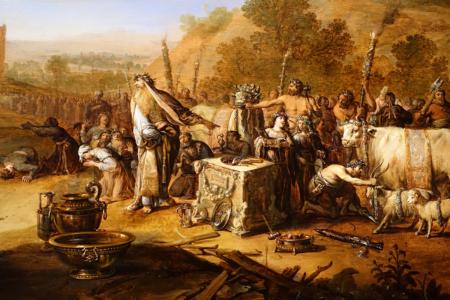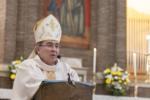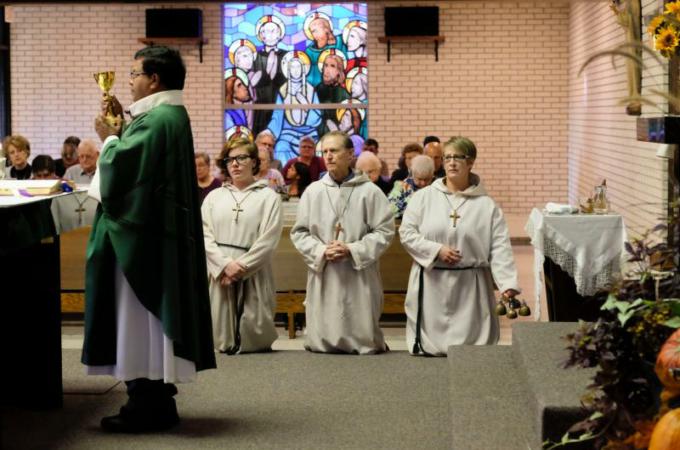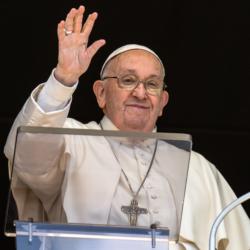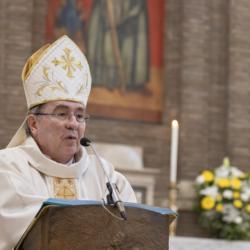Adult altar servers fill void in some parishes in Sioux City Diocese
SIOUX CITY, Iowa (CNS) -- At any given Saturday Mass at St. Bernard Church in Blencoe, Father Michael Erpelding may -- or may not -- have altar servers.
"I don't schedule altar servers because the reality is: I have two young people in the parish able to serve," he said. "If they attend elsewhere -- or another two who belong to the Onawa church aren't there -- then I rely on one senior citizen to help out."
It's a situation that is not out of the ordinary for some parishes in the Diocese of Sioux City, including Father Erpelding's previous pastorate at St. Joseph and St. Boniface parishes in Sioux City.
"In my prior assignment, I regularly used adult altar servers -- many of them were retired," he told The Catholic Globe, the diocesan newspaper. "There were just so few children in the parish that were the correct age to serve."
The aging population in northwest Iowa is one of the reasons individuals associated with Ministry 2025, pastoral planning for the diocese, are seriously looking at parish demographics to determine viability.
Blencoe, a community in Monona County, has a population of 224, according to the 2010 census. There are about 35 families registered in St. Bernard Parish, Father Erpelding reported.
"Salix has about 180 families and Onawa about 150 families," he noted, referring to St. Joseph and St. John churches, respectively, in a cluster of parishes. "I don't believe the low number of servers in Blencoe reflects some lack of interest. It's just the reality of the community."
Father Erpelding characterized Salix and Onawa as "younger parishes."
"Just recently I trained a large group to serve at both parishes," he said. "As I look around at Mass, it is gratifying to see families with youngsters, but again, I think it's just the demographics in those communities."
An actuality for Father Erpelding at St. Boniface and St. Joseph in Sioux City was the frequency of funerals, which also precluded having young altar servers.
"I would average a funeral at least once a week at those parishes, and it was problematic to pull children out of school on a regular basis to be altar servers," he said. "In those situations, I always used adults. I think they knew they were being helpful to me to fill a gap that was there."
According to Deacon David Lopez, chancellor of the diocese, by the second century, the three sacramental offices of bishop, priest and deacon were well-defined.
"However, as the church continued to grow, new offices of assisting at Mass also developed," he said. "These used to be called 'minor offices' and included lectors, porters -- or ushers -- and acolytes -- or servers, among others."
Eventually, the church determined that candidates for the sacramental, or major, offices should pass through these minor offices first, in a systematic way, Deacon Lopez pointed out.
"But at the same time, for several centuries the church also allowed people to hold these minor offices in a permanent way -- that is, they did not seek to advance to the diaconate and priesthood, but simply served for life in these roles," he said. "Some of these, we know, were children."
Although this system continued through the Middle Ages and into the modern world, in the last three to four centuries, the process did eventually break down, Deacon Lopez reported.
"What we did instead was build schools in nearly every parish and from these schools, we took students to serve as acolytes at Mass," he said. "From this very recent -- in church terms -- development, we have the expectation that servers should predominantly be children."
Deacon Lopez stressed this manner of volunteerism shows the important link between liturgy and ministry.
"The Mass is the microcosm of the church," he said. "While being 'source and summit,' it also models God's love and our call to serve others in the same way."
That idea of service was what attracted Kristil Schoo, a parishioner at St. Mary Church in Ashton, to serve at the altar.
"I remember (former pastor) Father John Vakulskas made an announcement at Mass that the parish was in need of servers and adults were encouraged to volunteer so I did," she said. "I was not an altar server growing up. I've only been a Catholic for 14 years, as I converted in 2002."
Schoo said that her husband, Bob, has often said he's honored his wife serves at the altar.
"My five daughters are proud, too, and maybe my five grandchildren," she said. "I usually serve with my daughter Anessa."
The lack of servers at St. Mary's is a challenge, Schoo acknowledged.
"Sometimes when you're scheduled and can't make it, it's at times hard to find a replacement, especially when serving with Anessa," she said. "Then, we have to find two replacements."
However, Schoo said the joy for her, particularly as someone who became a Catholic as an adult, was to be so close to the act of transubstantiation.
"When you realize heaven is on earth during the Mass and you are an integral part of that, it's a bit overwhelming," she said. "I continue to get 'goose bumps' -- which I believe is the Holy Spirit."
- - -
Fox is managing editor of The Catholic Globe, newspaper of the Diocese of Sioux City.
